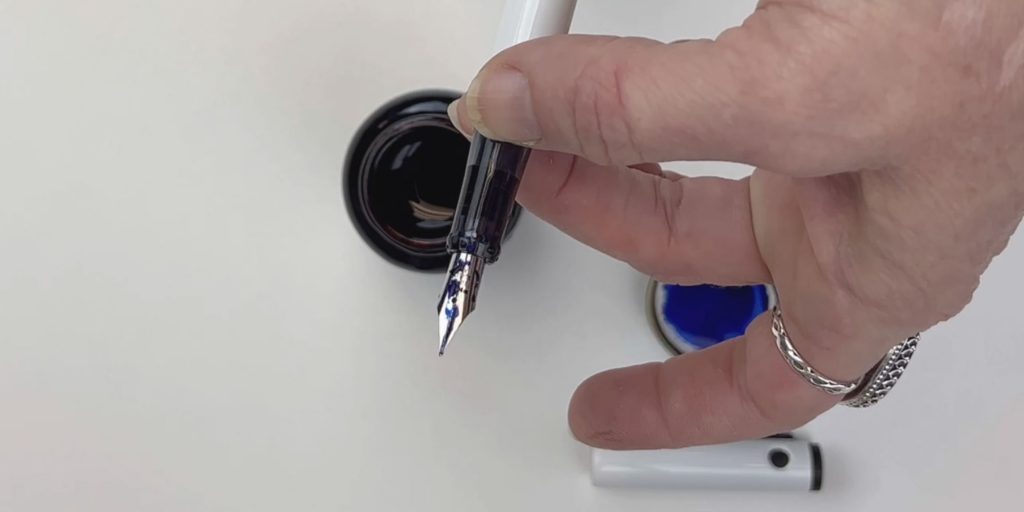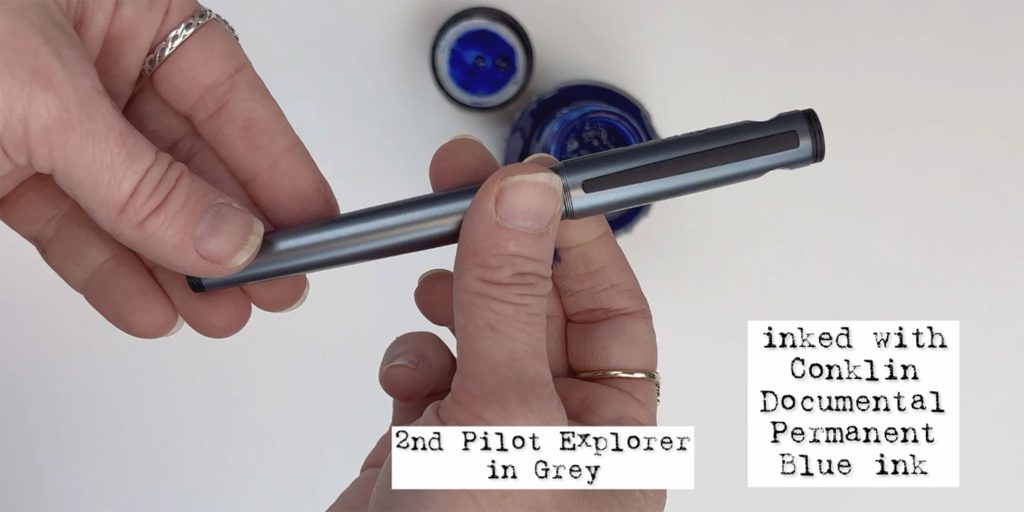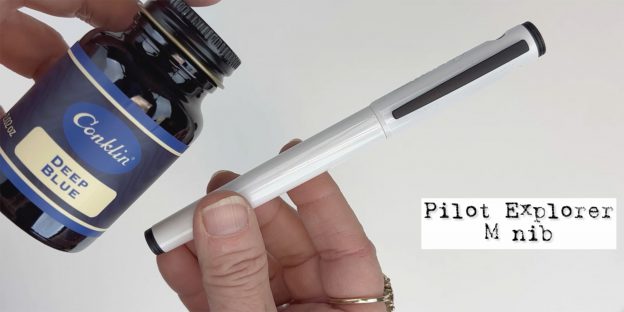One of our customers recently asked customer service for a basic comparison of permanent vs. standard ink for regular, everyday use. They weren’t sure what the difference was between the two types, and how it would affect their writing. We’re sure they’re not the only ones wondering, so we put together a quick video ink comparison showing you Conklin Documental Permanent Blue Ink and Conklin Vintage Deep Blue Ink side by side.
Watch the Video Ink Comparison: Permanent vs. Standard Ink
Products Used/Seen in Today’s Ink Comparison
In today’s ink comparison showing you both a regular Conklin ink and a permanent Conklin ink, we used the following the products:
- Conklin Documental Permanent Blue ink
- Conklin Vintage Deep Blue ink
- Pilot Explorer in White with a M nib
- Pilot Explorer in Grey with a M nib
- Dee Charles Designs Pen Wipe Wallet
The Ink Comparison: Permanent vs. Standard Ink
We thought presenting inks from the same brand would be the most helpful, so we pulled two inks made by Conklin, one of them a permanent ink, and one of them a standard fountain pen ink.
- Permanent ink: Conklin Documental Permanent Blue ink
- Standard ink: Conklin Vintage Deep Blue ink
To start, we took two pens (matching Pilot Explorers in different colors, but both with a medium size nib), and filled each of them with one of the inks.
Inking the Pens with Two Different Fountain Pen Inks:

Not related to the inks’ performance, but of note is that you’ll see us fill the fountain pens here, and the Pilot Explorer fountain pens use a squeeze converter. Some of you may be used to seeing a piston style twist converter. The squeeze converter is just another design. To use it, you squeeze the sides of the converter, dip the nib in the ink, and release the converter. Using the squeeze converter on each of our Pilot Explorer fountain pens, we inked our pens:
- White Pilot Explorer inked with Conklin Vintage Deep Blue ink
- Grey Pilot Explorer inked with Conklin Documental Permanent Blue ink

We also kept a Dee Charles Designs leather pen wipe wallet on hand to clean the section and the nib of excess ink after filling the pen.
Writing Samples: Permanent vs. Standard Ink
We started our first permanent vs. standard ink writing sample with the white Pilot Explorer filled with Conklin Vintage Deep Blue ink, and followed it with a writing sample with the Grey Pilot Explorer filled with Conklin Documental Permanent Blue ink.
Our Fountain Pen Ink Comparison Results:
As we put together writing samples for our ink battle (permanent vs. standard ink), we conducted a quick dry test, and water test. For the dry test, we inked a series of diagonal lines, and then waited a few seconds, 5 seconds, 6 seconds, 7 seconds, etc. before running a finger across the lines to check for dryness. We repeated the process waiting longer after drawing the lines each time until we hit the sweet spot for dry ink. For the water test, we wrote “water test” on the page right after conducting each ink’s dry test, then started our longer writing sample (copying down the info provided on the bottle’s exterior box packaging). When we finished writing down the info from the ink’s label, we ran a cotton swab dipped in water over the “water test” words to test their resistance to water. Here’s what we discovered:
Permanent Ink (Conklin Documental Permanent Blue ink): 9-second dry time, smooth and steady ink flow, and not affected by water (the water from the cotton swab picked up a bit of the ink’s coloring, but the writing itself was not affected by the water. The words “water test” were just as legible as they were when we put them down on the page).
Standard Ink (Conklin Vintage Deep Blue ink): 8-second dry time, smooth and steady ink flow, almost zero resistance to water (only remnants of lettering remained legible on the page after the water test with the ink’s color drifting out like a water spill).

Conclusion: The Difference Between Standard & Permanent Ink
When considering permanent vs. standard ink for regular, everyday use with your fountain pens or dip pens, we think they are equally usable. You may want to keep dry time in mind as some permanent inks (different brands, etc.) may have longer dry times that could make them less easy to use on a regular basis. Other than that – we suggest considering documental permanent inks as a valid everyday ink choice. The added benefit of having very high water resistance would only be a benefit (unless you have a very specific need for your writing to wash away with water – then using Conklin Documental Permanent Blue ink would cause you a problem). The other noticeable difference between the two inks used in this ink comparison is that the standard ink was much more vivid – with the Conklin Documental Permanent Blue ink showing up a more muted, grey-blue on paper. However, that’s just a color choice, so it could be used as one of the deciding factors in your decision about which ink to use. Regardless of which ink you prefer, look for your next bottle at PenChalet.com.




